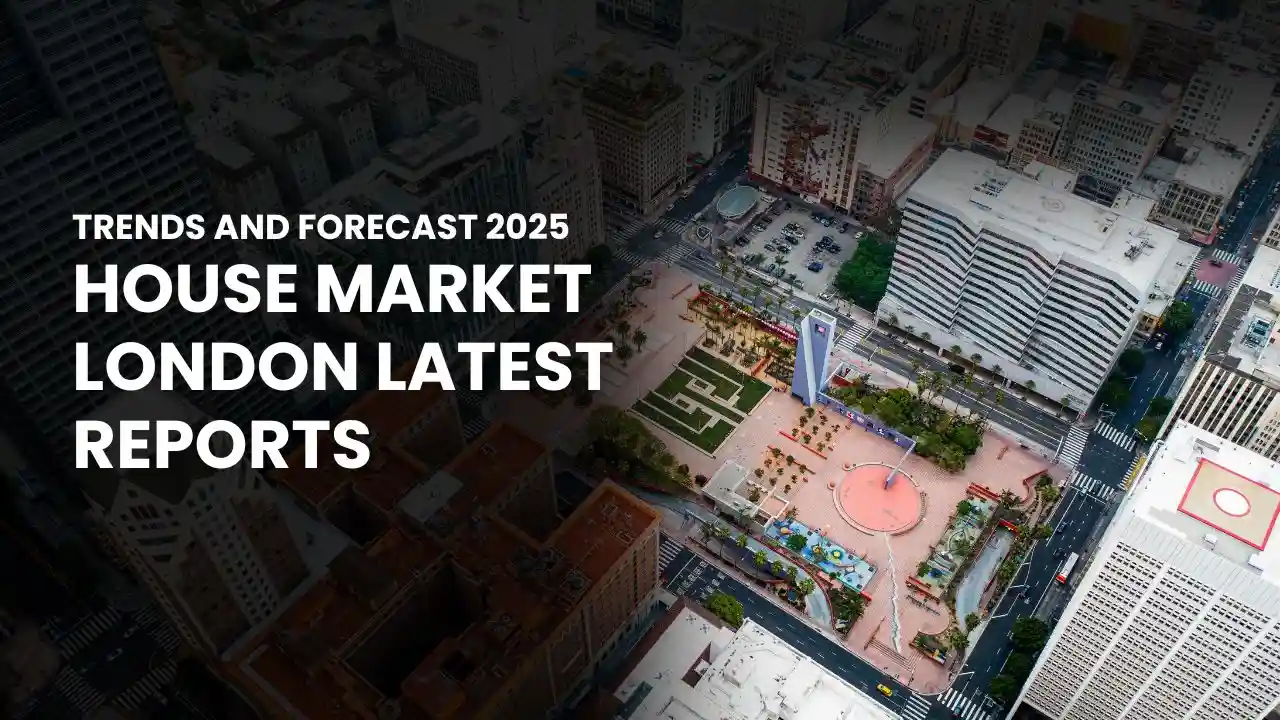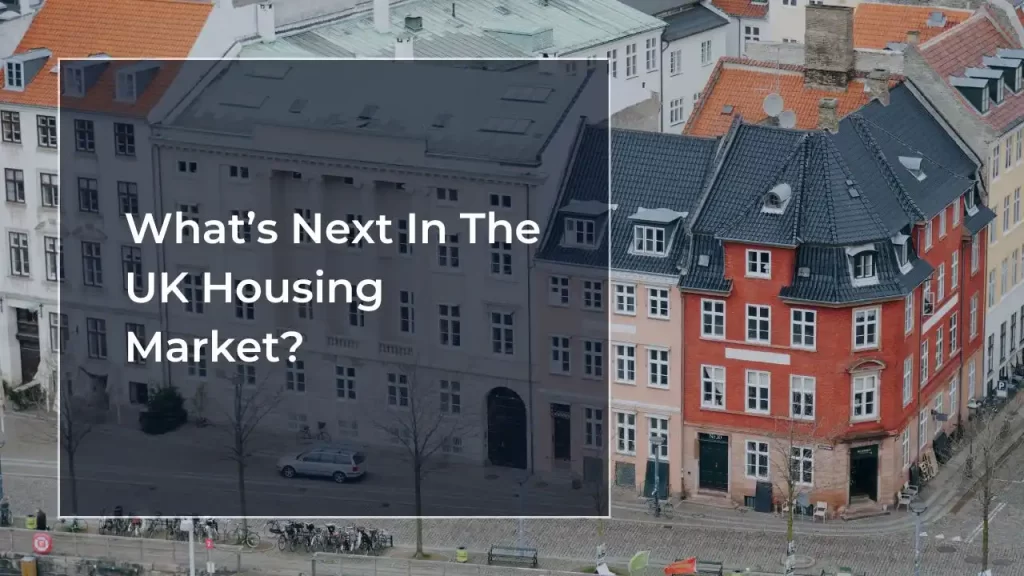House Market London Latest Reports, Trends, And Forecast 2025

Are you interested in how London property prices are shifting across different areas and what experts predict for the months ahead? So don’t be too surprised! The London Property Market is changing in many ways. Some areas continue to grow, while others are slowing down as buyers become more cautious in their choices. According to insights from an experienced Estate Agent Ilford, regional trends now play a major role in shaping investment decisions across the city.

Does the London Property Market Face a Price Slump?
The London Property Market is experiencing a noticeable slowdown as prices come under pressure from rising supply and weak buyer demand in buying a home. While some areas remain resilient, overall data shows clear signs of softening across the city.
- The average flat price in London has fallen by 2.6% year on year to £445,000, reflecting the growing impact of low demand.
- Across England and Wales, it is noted that London remains the most affected region due to affordability challenges.
- The imbalance between supply and demand has shifted power to buyers, allowing them to arrange lower prices.
- High mortgage rates, reduced rental property availability, and landlords exiting the market continue to weigh on price growth.
- Many first-time buyers are now drawn to cities like Manchester and Bristol, where property remains more attainable.
- Even prime properties above £2 million have faced double-digit declines, largely due to tax speculation and policy uncertainty.
Why are the Prices of Flats And Houses Falling In London?
With affordability issues, increased housing supply, and policy uncertainty, both flats and houses are seeing a noticeable price slowdown. This shift signals a reshaped and more balanced property market in London. Let us see the main reason for falling prices in London:
Affordability Challenges
Property prices have risen much faster than income levels in recent years. With London’s house price-to-earnings ratio now at 8.22, it has become one of the hardest places to buy a home in the UK.
Many first-time buyers are now turning to cities like Manchester and Bristol, where mortgage costs are more manageable and overall living feels less pressured.
High Supply and Market Correction
The market is now adjusting after years of rapid growth in prices. More homes are available for sale, increasing by nearly 20% compared to last year. This rise in supply is giving buyers more choices and reducing the strong advantage sellers once had.
Tax and Policy Uncertainty
Concerns about new wealth taxes, non-dom rules, and inheritance tax have slowed property sales, especially for homes over £2 million. Upcoming budget plans have also made many buyers pause before making their next move, adding a layer of caution to the London Property Market.

UK Average House Prices Over the Last 3 Months
Some regions have seen slight drops, others have remained stable, reflecting a market adjusting to interest rates, affordability, and local demand. This table gives a quick look at how average prices have moved recently.
| Property Type | July 2025 | August 2025 | September 2025 | Annual Price Change (£) |
| Flats and Maisonettes | £191,700 | £191,700 | £192,400 | -£2,280 |
| Terraced Houses | £239,900 | £239,900 | £240,100 | £3,940 |
| Semi-Detached Houses | £277,300 | £277,100 | £277,600 | £6,650 |
| Detached Houses | £451,600 | £451,900 | £452,000 | £5,890 |
How Is Property Tax Affecting Expensive Homes?
Talk about new property taxes property management has slowed the high-end housing market, especially for homes above £500,000. Many buyers are waiting before making a move, and sales have become slower across southern England, where the most expensive homes are located.
- Demand for expensive homes has decreased as buyers take longer to make decisions.
- Rumors of higher council tax, new annual property taxes, and added capital gains tax on homes over £1.5 million are making buyers cautious.
- Sellers are becoming more flexible on prices because buyers now have more room to negotiate.
- Prime areas, especially those with homes worth over £2 million, are seeing the biggest price cuts.
- Sellers should price their homes wisely and expect sales to take longer.
- Buyers have a better chance to negotiate, but they should think about future tax costs.
- Investors need to consider how potential tax changes could impact their returns.

What’s Next In The UK Housing Market?
The UK housing market has shown a strong recovery over the past two years, with sales now close to the 10-year average of 1.2 million transactions per year.. Buyers are expected to focus on homes that are fairly priced and offer genuine value for money. Below is a simple overview of the UK housing market outlook based on current trends:
| Market Indicator | Current Trend (2025) | Expected Outlook (Next 6–12 Months) |
| Sales Volume | Around 1.2 million transactions yearly | Likely to stay steady with moderate activity |
| House Price Inflation | 1% to 1.5% by year-end | Prices to remain stable with slow growth |
| Regional Trends | Stronger activity in affordable regions | Southern England may see continued price pressure |
| Buyer Behavior | Focus on value and location | Cautious approach due to tax and rate uncertainty |
| Stamp Duty Expectations | Speculation of reforms in upcoming Budget | Possible removal could boost market confidence |
Comparing Price Sensitivity And Prime Growth Trends
London’s property scene reflects two contrasting forces price sensitivity in the wider market and steady resilience in prime locations. Higher-value homes are seeing sharper price drops because of tax pressures and economic caution. In contrast, outer and regional areas are staying stable, supported by local buyers and sensible pricing.
| Aspect | Price Sensitivity | Prime Growth Trends |
| Market Movement | Prices across London have dropped for the third straight quarter, down about 2% yearly. | Prime markets show smaller declines, with outer prime London only down 0.7% this quarter. |
| Main Drivers | Reduced buyer confidence, higher mortgage costs, and ongoing tax speculation. | Continued demand in core, needs-based areas like South West and West London. |
| Regional Performance | Southern and coastal regions show the largest falls, especially in discretionary or second-home areas. | Prime regional markets in Midlands, North, Scotland, and Wales remain more resilient. |
| Long-Term Trend | Prices across the UK are 10% below their late-2022 peak. | Over ten years, prime regional prices are up 9.1%, while London’s remain 8.1% lower. |
| Buyer Behavior | Buyers are more cautious, avoiding over-stretching finances. | Stable interest from wealthy domestic and international buyers who value long-term assets. |
Final Taughts
The London Property Market is adjusting as prices slow in some areas while others remain stable. This shift offers buyers better value and more choice. An experienced Estate Agent Ilford can help guide you through these changing trends with ease.
Frequently Asked Questions
Yes, property prices are expected to rise gradually beyond 2025 as demand improves and inflation stabilizes. Growth will likely be slow but steady across most regions.
There are ongoing discussions about replacing stamp duty with an annual property tax. However, no final decision has been made, and buyers are waiting for official updates.
Recent reports show a slight decline in London prices, mainly due to low demand and higher supply. However, overall market activity remains stable compared to the past year.






